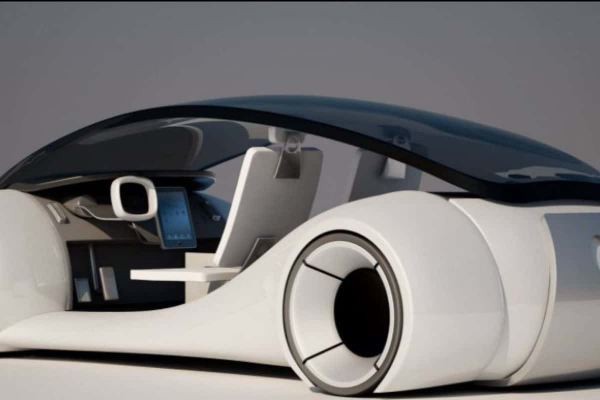Why does Apple make cars?
- Tram Ho
The UK’s Reuters news agency reported that Apple is revamping autonomous driving technology and plans to make cars by 2024, which may include groundbreaking self-developed groundbreaking battery technology. CNBC says that Apple has never acknowledged a “car plan”, but Cook claims to be developing a self-driving system that could be used for autonomous cars or other purposes.

DigiTimes predicts that Apple cars will be released between 2024 and 2025. According to Bloomberg, Apple has also handed over its Titan autopilot division to John Giannandrea, the division’s senior director. artificial intelligence. The main task is to develop an autonomous driving system that can be used in Apple’s electric vehicles.
The Economic Daily News of Taiwan also pointed out that Apple recently made volume requirements for Taiwanese auto parts manufacturers such as Heda, BizLink, Heqin and Tomita. Apple is expected to announce Apple Cars next September, and the prototype is now being tested on the road in California, USA.
Judging from the signs revealed by the media, the Apple building a car is a sure thing. As early as 2016, Musk said, “Tesla’s biggest competitor is not Google, but Apple.” Now, Musk’s biggest worry is coming.
Apple’s stock price has fluctuated between $ 100 and $ 120 for a long time, and its market value can basically be around $ 2 trillion. However, if you want a big breakthrough in market value in the future, it is very difficult to build in the existing direction. Clearly, with iPhone hardware sales hitting the ceiling, Apple’s services business is in an antitrust dispute again, and Apple needs to rush to find a new business to clear the situation.
The auto industry is opening up a period of rapid growth and this is a good time for Apple to enter the market at this point. From January to November this year, 17.79 million passenger cars were sold in the Chinese market, and electric cars accounted for 5.4%. The industry predicts that electric vehicle sales will exceed 1.5 million units next year.
According to economic principles, when a new product enters the market and the market share can increase by about 10%, that is often the inflection point of explosive growth. This principle has been verified in the smartphone industry. In the electric vehicle market this year, products such as Model 3 (Tesla) and Wuling Hongguang mini (SAIC-GM-Wuling) have attracted huge attention, and inflection point will come faint.
Apple’s main products are mainly consumer electronics products represented by iPhone, Mac and iPad. For now, all Apple sets out in the industrial chain is to form a complete supply chain around these consumer electronics products. But in the automotive sector, Apple is still a novice.
But Apple has long-standing plans in the automotive sector. Since the Apple project, code-named Titan was founded in 2014, Apple’s patent registration of cars has not been interrupted. In January 2016, Titan opened its first major correction. Apple still had a few years left to develop “a truly different electric car,” according to anonymous employees at the time. Due to its lack of clear goals, the Titan project faced a number of challenges.
But despite this, Apple’s investment in the auto sector hasn’t stopped. According to incomplete statistics, Apple has registered nearly 100 automotive patents since 2017, including charging, autonomous driving, AR navigation, biometrics, smart hardware and sensors, systems on the vehicle, optimizing the body structure, ensuring safety, … it can be said that it covers the core areas of car manufacturing.
In 2018, Apple received several patents related to lidar. The core of Apple’s car strategy is the new battery design, according to Apple insiders. Design reduces the number of modules to store battery material and free up space inside the battery pack, thereby making the car more durable.
From the perspective of patent reserve, by 2020, Apple has received at least 10 autonomous driving patents, covering three main areas: sensors for autonomous driving, communication and control.
In addition, Apple has also applied for obstacle detection lidar, hidden lidar, traffic police gesture recognition and scene recognition in inclement weather conditions. We see that lidar is already in use on the iPhone 12 and Apple can still observe the passenger. The psychological changes govern the driving mode and other related patents.
Apple’s patents in smart cockpit include: vehicle voice and gesture operations. Cars use gestures (AR recognition) or eye movement (eye tracking technology) to determine the driver’s intentions to perform relevant operations. This technology is further upgraded and can be extended to interact with passengers.
The current mainstream model of new energy vehicles is the first to develop a highly integrated chassis comprising electrical systems, battery systems, vehicle controls and automatic driving performance such as braking and steering, called “Skateboard”. For this piece of work, Apple’s current accumulation and disposition in the automotive sector is not a big deal.
As can be seen from these patent applications, Apple’s performance in the field of centrally controlled cars and autonomous driving is highly desirable. Apple’s patent accumulation in the smart cockpit is even more interesting. Although a number of patents have been applied to some car manufacturers, the ability to integrate Apple’s technology and products will certainly make a difference.
Overall, Apple wants to build a self-driving electric car with intelligence, high connectivity, software and hardware integration that, if released, can expect it to surpass the interactive experience in the car. Existing slightly and innovating the user experience.
Source : Genk
